Zero Welding Defects Guaranteed: Lida Group’s Steel Frame Building Process Ensures Premium Quality Warehouse Longevity
2025-Aug-15 14:43:45
By Admin
1. Introduction
In the realm of industrial construction, the integrity of steel frame structures is paramount, especially for warehouses that bear heavy loads, withstand extreme weather, and serve as critical hubs for global supply chains. Welding, the process that joins steel components, is a cornerstone of steel frame construction. Even minor welding defects can compromise a structure’s strength, leading to premature wear, safety risks, and costly repairs. As industries demand more durable, reliable, and long-lasting warehouses, the need for flawless welding has never been more critical.
Lida Group, a leader in steel structure engineering, has revolutionized the sector with a steel frame building process that guarantees zero welding defects. This achievement is not merely a technical feat but a commitment to premium quality, ensuring that warehouses built with their systems stand the test of time. By combining advanced technology, rigorous quality control, and skilled craftsmanship, Lida Group has set a new standard for steel frame construction. This article explores the significance of zero welding defects, Lida Group’s innovative process, and the impact of their approach on warehouse longevity and performance.
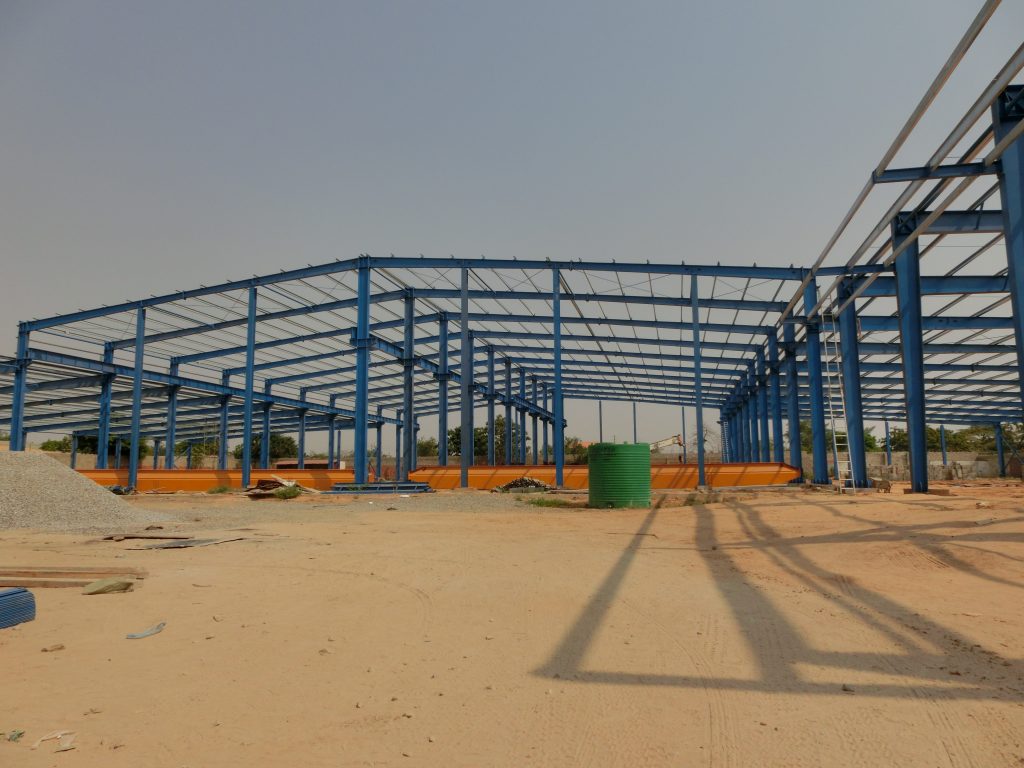
2. The Critical Role of Welding in Steel Frame Warehouses
2.1 Welding as a Foundation of Structural Integrity
Welding is the backbone of steel frame construction, responsible for joining beams, columns, and other components into a cohesive, load-bearing structure. In warehouses, where large spans, heavy storage loads, and dynamic forces (such as wind or seismic activity) are common, welded joints must distribute stress evenly to prevent failure. A strong, defect-free weld ensures that the structure can withstand these forces over decades, maintaining its stability and safety.
The performance of a warehouse directly depends on the quality of its welds. For example, in logistics facilities storing heavy pallets or machinery, welded joints in floor beams and support columns must bear constant weight without deformation. In cold-storage warehouses, where temperature fluctuations can cause metal to expand and contract, welds must remain flexible yet strong to avoid cracking. Even a single weak weld can create a domino effect, leading to structural fatigue, leaks, or collapse in extreme cases.
2.2 Common Welding Defects and Their Consequences
Despite its importance, welding is prone to several common defects that can compromise structural integrity. Porosity—small gas bubbles trapped in the weld—weakens the joint by creating voids, reducing its load-bearing capacity. Cracks, which can form due to improper cooling, excessive heat, or poor material compatibility, are particularly dangerous as they can spread over time, leading to sudden failure. Undercutting, a groove formed along the edge of the weld, reduces the thickness of the base metal, making it vulnerable to stress fractures.
Incomplete fusion—where the weld fails to fully bond with the base metal—creates weak points that can separate under load. Similarly, overlapping (excess weld material that does not fuse properly) can cause uneven stress distribution. These defects not only shorten a warehouse’s lifespan but also pose safety risks to workers and stored goods. For instance, a cracked weld in a roof truss could lead to collapse during a storm, resulting in costly damage and potential injuries.
Beyond safety, welding defects increase maintenance costs. Repairs often require shutting down parts of the warehouse, disrupting operations. Over time, repeated fixes can become more expensive than investing in high-quality welding upfront. In industries where downtime is costly—such as e-commerce fulfillment centers or manufacturing facilities—these disruptions can harm profitability.

3. Lida Group’s Zero Welding Defect Process: A Comprehensive Approach
3.1 Advanced Pre-Welding Preparation
Lida Group’s commitment to zero defects begins long before the welding torch is lit, with meticulous pre-welding preparation. The process starts with material selection: only high-grade, certified steel is used, with strict testing to ensure it meets mechanical properties (such as tensile strength and ductility) required for welding. This eliminates issues like impurities in the steel, which can cause porosity or cracking during welding.
Next, surface preparation is rigorously executed. Steel components are cleaned to remove rust, oil, paint, or debris—contaminants that can interfere with fusion. Automated sandblasting and chemical cleaning ensure uniformity, leaving the metal surface pristine and ready for welding. Lida Group also employs precise joint design: engineers use 3D modeling to optimize joint geometry, ensuring proper fit-up and reducing the risk of gaps that could lead to incomplete fusion.
Before welding, components undergo alignment checks using laser measurement tools. This ensures that parts are positioned with minimal tolerance (often within 0.5mm), preventing uneven stress during welding. Any misalignment is corrected immediately, as even small gaps can compromise weld quality. This attention to detail in preparation lays the groundwork for flawless welding.
3.2 Precision Welding Technologies
Lida Group leverages cutting-edge welding technologies to achieve consistent, defect-free results. Automated welding systems—including robotic arms and computer numerical control (CNC) machines—are used for repetitive or high-precision joints. These systems deliver uniform heat input, travel speed, and wire feed, eliminating human error that can cause defects like uneven bead formation or overheating.
For complex joints or large components, semi-automated welding combines machine precision with skilled operator oversight. Welders use advanced tools such as pulsed arc welding, which controls heat input to reduce distortion and porosity. This technology is particularly effective for thick steel sections, where heat distribution is critical to avoiding cracks.
Lida Group also employs laser welding for specialized applications, such as joining thin steel sheets or creating intricate joints. Laser welding produces narrow, deep welds with minimal heat-affected zones, reducing the risk of warping or cracking. This precision ensures that even the most delicate joints meet strength requirements.
3.3 Rigorous Quality Control and Testing
No welding process is complete without rigorous quality control, and Lida Group’s testing protocols are second to none. Every weld undergoes visual inspection by certified inspectors, who check for surface defects like cracks, porosity, or uneven beads. This initial check is supplemented by non-destructive testing (NDT) methods, which evaluate weld integrity without damaging the structure.
Ultrasonic testing uses high-frequency sound waves to detect internal defects such as hidden cracks or incomplete fusion, providing detailed images of the weld’s interior. X-ray and gamma-ray inspection are used for critical joints, revealing flaws that are invisible to the naked eye. Magnetic particle testing identifies surface cracks in ferrous metals by applying magnetic particles that cluster around defects, making them visible under UV light.
For large-scale projects, Lida Group uses phased array ultrasonic testing (PAUT), a advanced NDT technique that can inspect multiple weld zones simultaneously, ensuring comprehensive coverage. Any weld that fails these tests is immediately repaired or replaced, with root-cause analysis to prevent recurrence. This zero-tolerance approach ensures that only flawless welds make it into the final structure.
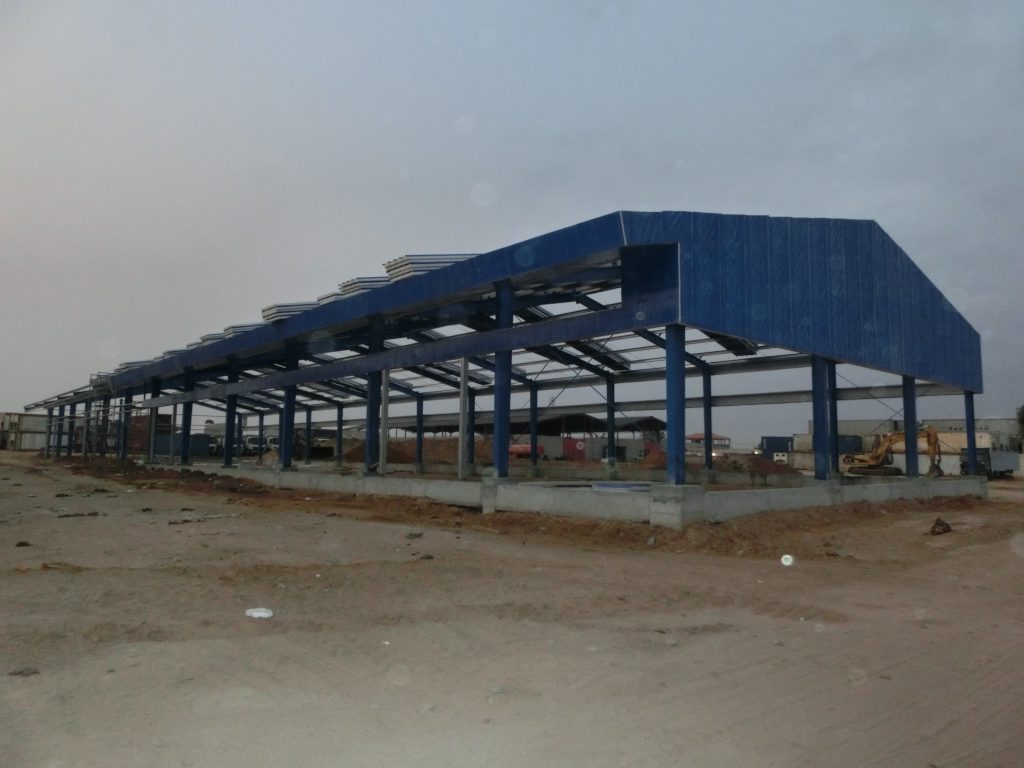
4. Features of Lida Group’s Steel Frame Warehouses
4.1 Enhanced Structural Strength and Durability
Lida Group’s zero-defect welding process results in steel frame warehouses with exceptional structural strength. Welded joints distribute stress evenly across the frame, allowing the structure to withstand heavy static loads (such as pallet racking) and dynamic loads (such as forklift traffic or wind pressure). This strength extends the warehouse’s lifespan, with many structures designed to last 50+ years with minimal maintenance.
The durability of these warehouses is further enhanced by corrosion-resistant treatments. Welded joints, which are often vulnerable to rust, are coated with zinc-rich primers or galvanized to protect against moisture and chemicals—critical for warehouses in humid climates or those storing corrosive materials. This resistance to degradation ensures that the frame remains strong even in harsh environments.
4.2 Resistance to Environmental Stressors
Warehouses face a range of environmental challenges, from extreme temperatures to seismic activity, and Lida Group’s steel frames are engineered to resist them. The precision welds maintain their integrity during thermal expansion and contraction, preventing cracks that could form in poorly welded structures. In earthquake-prone regions, the flexible yet strong welds allow the frame to absorb seismic energy without collapsing, protecting both the building and its contents.
For warehouses in coastal areas, where saltwater spray accelerates corrosion, Lida Group uses marine-grade steel and specialized weld treatments. This ensures that joints remain intact, avoiding the rust-related weakening that plagues conventional structures. Similarly, in areas with heavy snowfall or high winds, the robust welds in roof trusses and wall frames prevent deformation or failure.
4.3 Design Flexibility and Customization
While prioritizing weld quality, Lida Group’s steel frames offer exceptional design flexibility. The zero-defect welding process allows for complex geometries, enabling warehouses to be customized to specific needs—whether for high ceilings, wide spans, or integrated features like mezzanines or loading docks. This flexibility is critical for industries with unique requirements, such as cold storage (where insulation and temperature control demand precise frame layouts) or automated logistics (where robotic systems need unobstructed floor space).
The modular nature of Lida Group’s steel frames, made possible by consistent weld quality, allows for easy expansion. Additional bays or levels can be added with minimal disruption, as new components weld seamlessly to the existing structure. This adaptability ensures that warehouses can grow with a business’s needs without compromising on safety or durability.
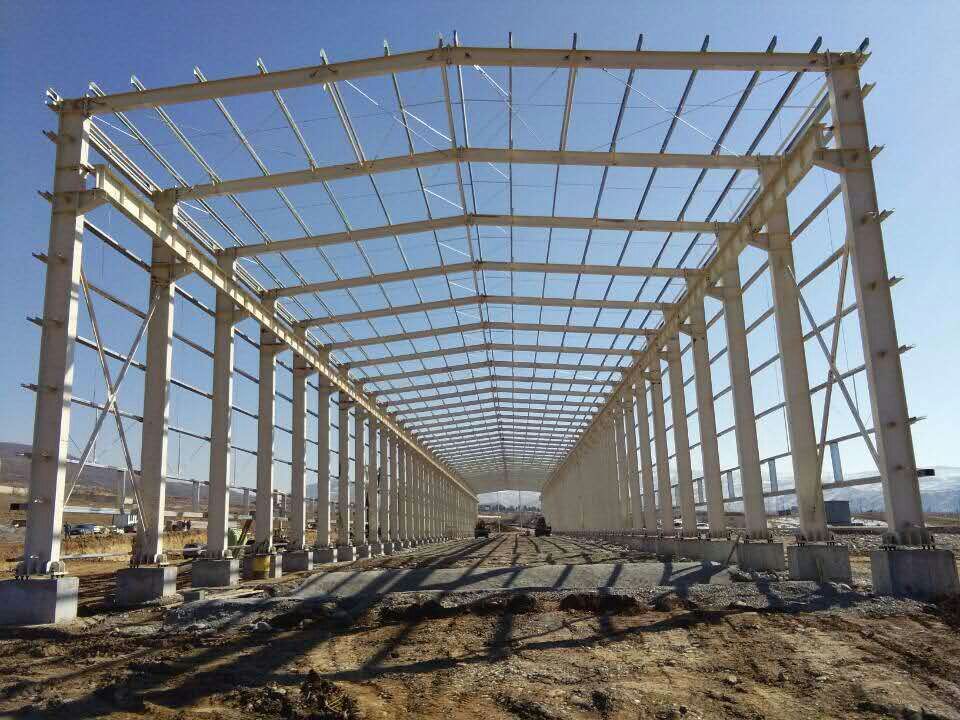
5. Benefits of Zero Welding Defects for Warehouse Operators
5.1 Reduced Maintenance and Repair Costs
One of the most significant benefits of Lida Group’s zero-defect welding is reduced long-term maintenance costs. Warehouses with flawless welds rarely require expensive repairs to fix cracked or weakened joints. This contrasts with conventional structures, where welding defects often lead to recurring issues—such as leaking roofs from cracked welds in roof panels or sagging floors from failed beam joints.
The durability of the frames also reduces the need for proactive maintenance, such as reinforcing welds or replacing corroded sections. Over the warehouse’s lifespan, these savings can be substantial, especially for large facilities or those in high-stress environments. For example, a distribution center with 100,000 square feet of floor space could save millions in repair costs over 30 years compared to a warehouse with subpar welds.
5.2 Enhanced Safety and Compliance
Zero welding defects directly translate to enhanced safety for warehouse workers and stored goods. A structurally sound frame is less likely to collapse or deform, even under extreme conditions. This reduces the risk of accidents, such as falling debris or collapsed racking, which can cause injuries or damage to inventory.
Compliance with building codes and industry standards is also simplified. Regulatory bodies, such as the International Code Council (ICC) or local authorities, require warehouses to meet strict structural safety standards. Lida Group’s zero-defect process ensures that welds exceed these requirements, making inspections smoother and avoiding costly delays or penalties. For industries with stringent safety regulations—such as pharmaceutical or food storage—this compliance is particularly valuable.
5.3 Improved Operational Efficiency
A structurally sound warehouse operates more efficiently. Without the need for frequent repairs, operations are rarely disrupted, allowing for consistent productivity. The design flexibility of Lida Group’s frames also supports efficient layouts, such as wider aisles for forklifts or higher ceilings for vertical storage, maximizing space utilization.
In automated warehouses, where precision is key, the stability of the steel frame ensures that robotic systems function reliably. Vibration from machinery or traffic is absorbed evenly by the frame, preventing misalignments that could disrupt automation. This reliability is critical for meeting tight delivery deadlines in e-commerce or manufacturing.
5.4 Long-Term Investment Value
Warehouses built with zero-defect welds retain their value over time, making them a sound long-term investment. Their durability ensures that they can adapt to changing industry needs—whether repurposing for new storage technologies or expanding capacity. This longevity also makes them attractive to buyers or tenants, as they offer lower operational costs and fewer risks.
For companies building warehouses as assets, the premium quality of Lida Group’s frames translates to higher resale or lease values. Investors recognize that a structure with flawless welds is less likely to depreciate quickly, providing a better return on investment.
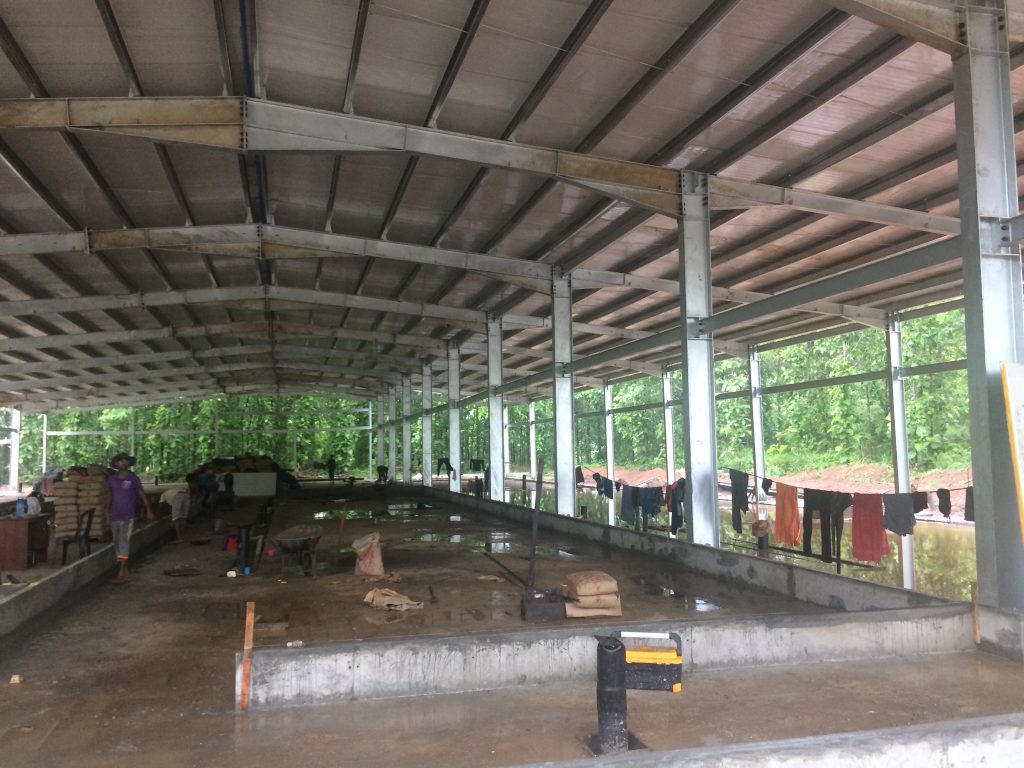
6. Case Studies: Lida Group’s Zero Defect Warehouses in Action
6.1 Large-Scale Logistics Hub
A global logistics company commissioned Lida Group to build a 500,000-square-foot warehouse in a region prone to high winds and heavy rainfall. The facility required wide spans (up to 100 feet) to accommodate automated storage and retrieval systems (AS/RS). Lida Group’s zero-defect welding process was critical for ensuring the roof trusses and support columns could withstand wind loads of 150 mph.
Five years after construction, the warehouse has operated without a single welding-related issue. Inspections using ultrasonic testing confirmed that all welds remain intact, with no signs of cracking or corrosion. The company reports that maintenance costs are 40% lower than for its older warehouses, which were built with conventional welding methods. The facility’s ability to withstand extreme weather has also prevented downtime during storms, saving an estimated $2 million in potential losses.
6.2 Cold-Storage Facility
A food distribution company needed a cold-storage warehouse capable of maintaining temperatures as low as -20°F (-29°C). Such environments can stress steel frames, as repeated freezing and thawing can cause welds to crack. Lida Group used specialized low-temperature steel and precision welding to ensure joints remained flexible and strong.
After three years of operation, thermal imaging and magnetic particle testing revealed no defects in the welds. The warehouse has maintained its structural integrity despite daily temperature fluctuations, avoiding the costly leaks and insulation damage that plague poorly welded cold-storage facilities. The company estimates that the zero-defect welds have extended the warehouse’s projected lifespan from 30 to 50 years, significantly reducing long-term replacement costs.
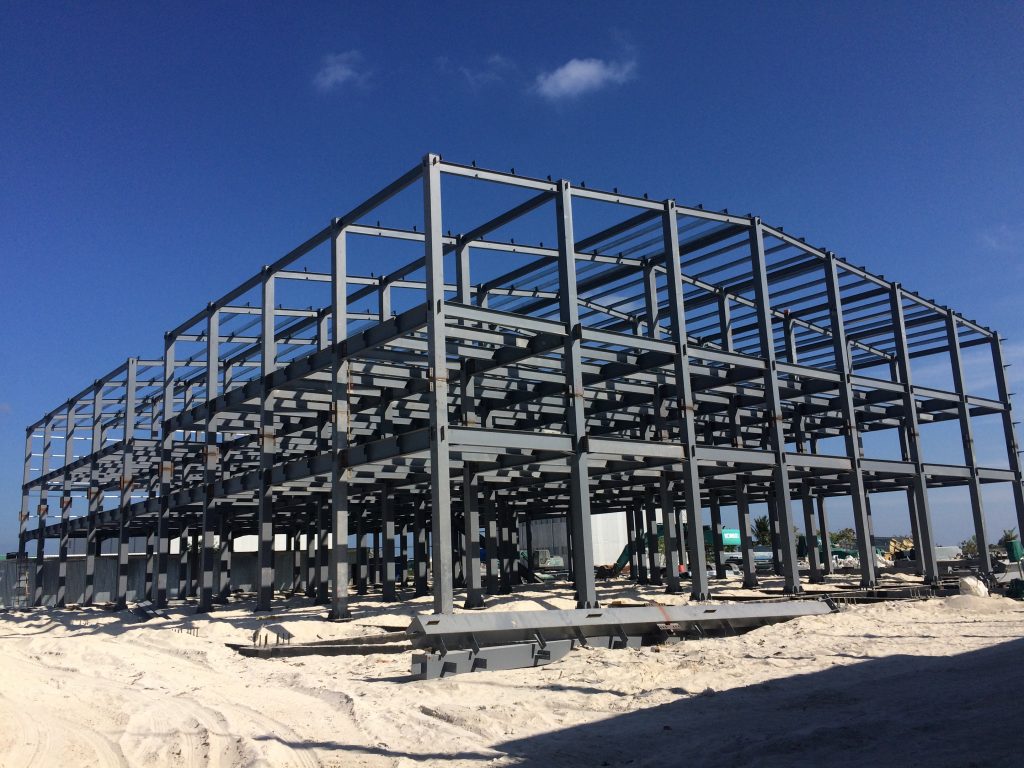
7. Future Innovations in Welding Technology for Steel Frames
7.1 AI-Powered Welding Systems
Lida Group is investing in artificial intelligence (AI) to further enhance its welding process. AI-powered systems can analyze real-time data from welding machines—such as heat input, arc voltage, and travel speed—to detect potential defects as they form. Machine learning algorithms, trained on thousands of weld samples, can adjust parameters mid-weld to prevent issues like porosity or undercutting. This proactive approach will make zero defects even more consistent, especially for complex joints.
7.2 Digital Twin Technology
Digital twins—virtual replicas of physical structures—are being integrated into Lida Group’s design and welding processes. Engineers create a 3D model of the warehouse, simulating welding sequences to identify potential stress points or alignment issues before construction. During welding, sensors on machinery feed data to the digital twin, allowing real-time comparison between planned and actual weld quality. This technology enables immediate adjustments, ensuring that every weld matches the design specifications.
7.3 Sustainable Welding Practices
Sustainability is a growing focus, and Lida Group is developing eco-friendly welding techniques. This includes using low-carbon steel and energy-efficient welding machines that reduce emissions. The company is also exploring recyclable welding consumables (such as electrodes) to minimize waste. These innovations will align with global efforts to reduce the construction industry’s carbon footprint while maintaining zero defects.
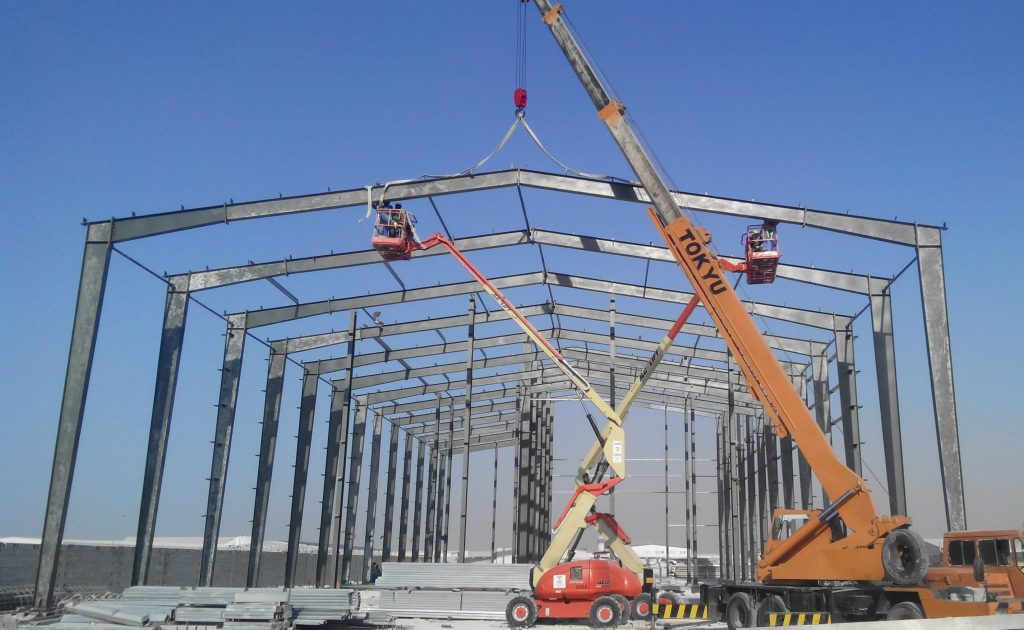
8. Conclusion
Lida Group’s guarantee of zero welding defects represents a paradigm shift in steel frame warehouse construction. By prioritizing precision, technology, and rigorous quality control, the company has demonstrated that flawless welds are not just a goal but an achievable standard. This commitment directly impacts warehouse longevity, safety, and efficiency, offering tangible benefits to operators, investors, and industries worldwide.
The consequences of welding defects—from structural failures to costly repairs—are well-documented, making Lida Group’s approach indispensable in today’s demanding industrial landscape. Their process ensures that warehouses can withstand environmental stressors, heavy loads, and the test of time, all while reducing operational costs and enhancing safety.
Case studies from logistics hubs and cold-storage facilities validate the effectiveness of this approach, showing that zero-defect welds translate to long-term reliability and value. As Lida Group continues to innovate—integrating AI, digital twins, and sustainable practices—the future of steel frame construction looks even more promising.
In a world where infrastructure must be both durable and adaptable, Lida Group’s zero-welding-defect process sets the standard for premium quality. By ensuring that every weld is flawless, the company is not just building warehouses but creating lasting assets that support global supply chains, protect workers, and drive economic growth. For anyone investing in a warehouse, Lida Group’s steel frames offer the ultimate assurance: a structure built to last, with zero compromises on quality.
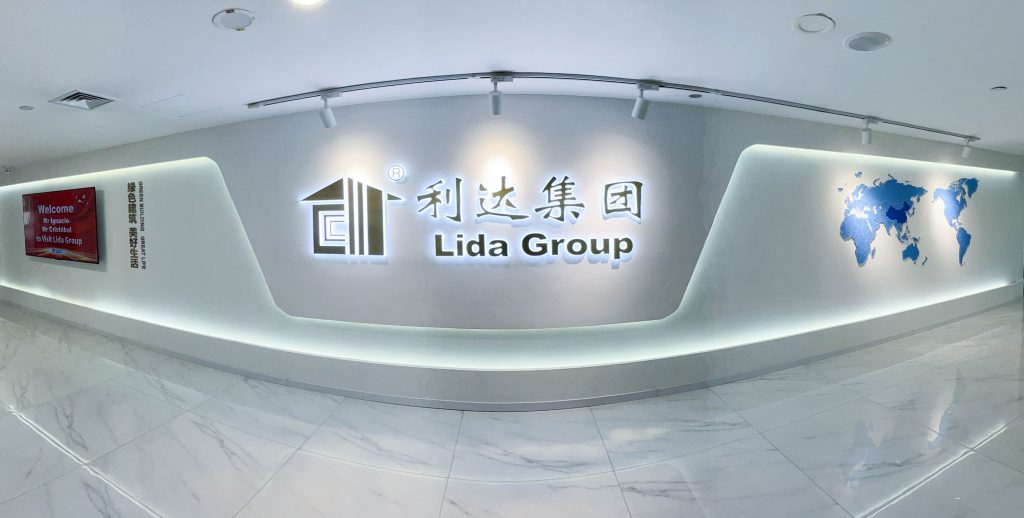
Related news
-
Automated Poultry Revolution: Lida Group Delivers Climate-Controlled Steel Farm Houses via Advanced Steel Structure Construction
2025-08-14 14:25:15
-
Pharma Storage Breakthrough: Lida Group's High-Quality Steel Warehouses Feature Precision Steel Frame Building for Vaccine Integrity
2025-08-14 15:46:08
-
Sustainable Steel Advancement: Lida Group Cuts Carbon Footprint 40% in Farm House Construction Using Recycled Steel Frames
2025-08-14 16:43:52
contact us
- Tel: +86-532-88966982
- Whatsapp: +86-13793209022
- E-mail: sales@lidajituan.com


